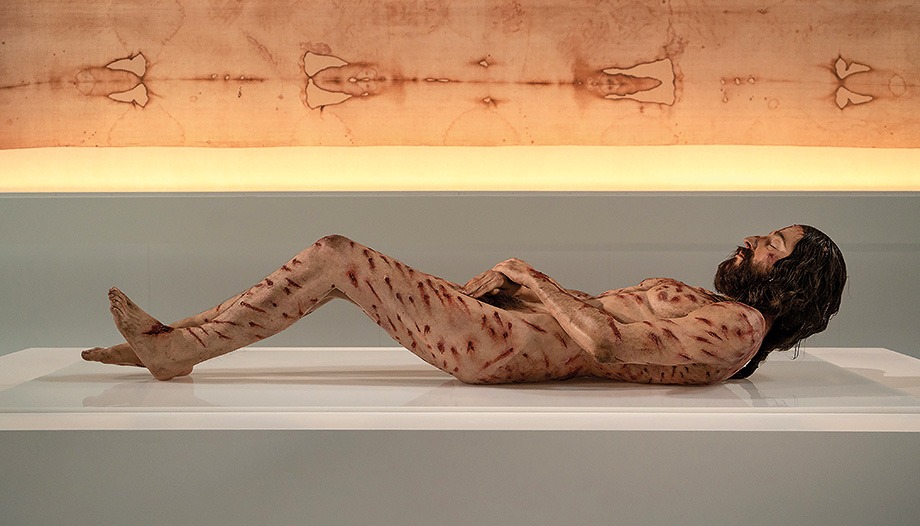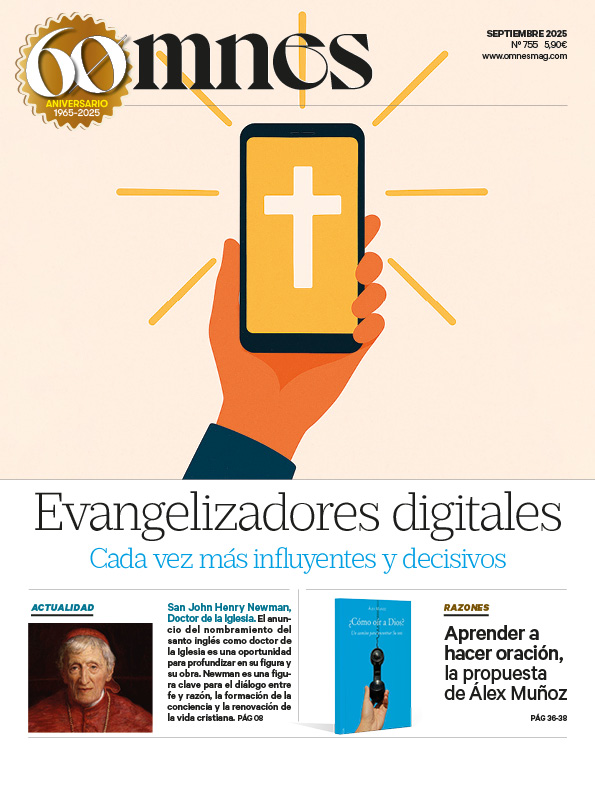Face to face with the body of Christ crucified and placed in the tomb. This is how one could define the experience offered by The Mystery mana unique exhibition on "the man of the Holy Shroud". An exhibition that has had its first stop for more than five months in the Spanish cathedral of Salamanca and that was born with the aim of touring the five continents over the next few years, as Francisco Moya, general director of Artisplendore, the cultural management company specializing in sacred art that has been the architect of this unique and impressive exhibition, points out to Omnes.
The exhibition breaks down, over six exhibition areas, the most important aspects of one of the great enigmas of history: the figure of Jesus of Nazareth, the condemnation and death of Christ, the Shroud, forensic studies on the Shroud, a spectacular immersive room and, finally, the highlight of this exhibition, the room where the body recreated from the Shroud is exhibited. "In fact, this reproduction of the man in the Shroud of Turin is the key differentiating point of this exhibition from others we have been able to see."Francisco Moya emphasizes.
A unique reproduction and one that shows, as Artisplendore's general manager explains "all the signs of the passion and the cross that appear on the Shroud".. The similarity is such that "we are really looking at a man, not a sculpture."he says.
The history of the Shroud of Turin
The Mystery man cannot be understood without knowing everything that surrounds the Holy Shroud, the linen cloth that covered Jesus of Nazareth after his death on the Cross. The body of the man whose body was wrapped in this cloth was imprinted on it, suggesting that it is the image of Christ. This relic is one of the most studied objects in history and arouses great interest among scholars due to its peculiarities. It is precisely this cloth that is the origin of the exhibition, since it has been used to obtain the hyper-realistic image of Jesus.
The exhibition traces the history, not without vicissitudes, of this singular relic. Thus, we go back to the 14th century, when a French knight claims to have the sheet that wrapped the body of Christ after his death. However, he cannot reveal how he obtained it. Before his death in the battle of Poitiers, he donates the cloth to some monks who begin to receive visits from pilgrims who want to see the supposed relic.
During the Hundred Years' War, the religious returned the shroud to the knight's family to protect it. When the war ends, the heiress of the family refuses to return the Shroud and uses it as a passport to Italy, where she seeks refuge in exchange for giving the relic to the later Italian kings, the Dukes of Savoy.
The dukes kept the sheet in the church of their castle, which burned in a fire in 1523. The silver reliquary in which they had placed the cloth melted, a drop of it penetrating the sheet, but without destroying the image. Fifty years later, the relic arrived in Turin, where it is still kept in the cathedral.
Forensic investigation of the corpse
The various investigations on the Shroud, on which the exhibition is based, show that this cloth covered the body of a dead man, a recent corpse. The forensic study of the image shows the position of the body: the head is flexed, the chest muscles contracted, the arms crossed and the legs flexed. In addition, from the tissues that could be obtained, it has been demonstrated that the corpse was that of a Caucasian male, with blood type AB and a height of 178 centimeters.
Among the various injuries that can be seen in the forensic analysis, more than fifty wounds produced by a sharp object can be observed in the skull area. On the face there are also injuries, especially a broken nose and a deviated septum. On the back, torso and legs there is evidence of a Roman flagellation. A post-mortem wound can also be seen, piercing the side through the body.
The Shroud of Turin was exhibited for the first time in 1898 for two days. Photographer Secondo Pia obtained permission to photograph the relic. At the moment of developing the image, Pia discovered that a positive was developed on the plate. There was only one possibility: that the sheet was the negative.
The entire scientific community was shocked by the discovery, but it was not until 33 years later that the same test was repeated. As expected, the result was identical: that canvas was the negative of an image.
In the mid-1930s, forensic physician Pierre Barbet began studies of the relic. After many tests on cadavers, Barbet concluded that the image was a strangely accurate anatomical model, as it revealed physiological and pathological features that were unknown in the medical world 150 years earlier.
The analysis of the Shroud continued in 1988, when permission was granted to a group of scientists to perform carbon-14 testing on the cloth. Three different laboratories would carry out the analysis in order to date the shroud. The results indicated that the shroud had been manufactured between the 13th and 14th centuries, implying that the supposed relic was in fact a fraud.
However, one year later, the scientific journal Nature demonstrated the unreliability of the carbon-14 test. Each laboratory obtained a very different date. The contamination of the linen did not allow the results to be reliable. Therefore, the Shroud could not immediately be considered a forgery.
Given the failures they found in this test, the scientists decided to take a different route. Samples of pollen were obtained to determine more accurately the date of the sheet, since the characteristics of this element allow to obtain many data. These studies place the shroud in Jerusalem, but also prove that it was moved through Italy and France.
Studies of the Shroud have been carried out more than once, but science has not been able to demonstrate how an image with the characteristics of the shroud was produced.
The unique characteristics of the Shroud
The Shroud, of which we can find an exact reproduction in the exhibition, is a very special image, due to nine aspects that are not present in any other image: superficiality, absence of pigmentation, non-directionality, thermal stability, hydrological stability, chemical stability, detail, negativity and three-dimensionality.
Superficiality means that the image barely penetrates the yarns. Absence of pigmentation means that there are no known chemicals. Non-directionality refers to the fact that no trace can be discovered that should have remained when painting. Stability refers to the fact that the image is not affected by temperature, water or chemicals. In terms of detail, the trace of the body is very detailed. Negativity is the characteristic that Pia discovered and three-dimensionality implies that the image has relief.
The exhibition
The centerpiece and highlight of the Mystery Man is, without a doubt, the hyper-realistic representation of the man in the Shroud of Turin.
When people come to her, says Francisco Moya, "emotion, feeling, faith, come to light".. It is the first time that something like this has been exhibited and all those who pass in front of the image say they are shocked.
The life-size body shows the wounds depicted on the Shroud, which are identified with the Gospels' account of the Passion of Christ.
Upon entering the room where the representation of the body of Christ is located, a life-size reproduction of the Shroud can be seen above it. In this way, the spectator perceives, in three dimensions, the results of an investigation that has been in progress for more than fifteen years.
Tickets for the exhibition can be found on the web site of Mystery ManAlthough it will only be in Spain, in principle, until the month of March, since then it will begin its pilgrimage around the world. The project is expected to run for about twenty years, adapting to the exhibition languages of the moment.
In short, as the people in charge say, this exhibition is an "historical, artistic and scientific journey on the studies of the Shroud, its impact on the Christian world and on the representation of the image of Jesus"..







